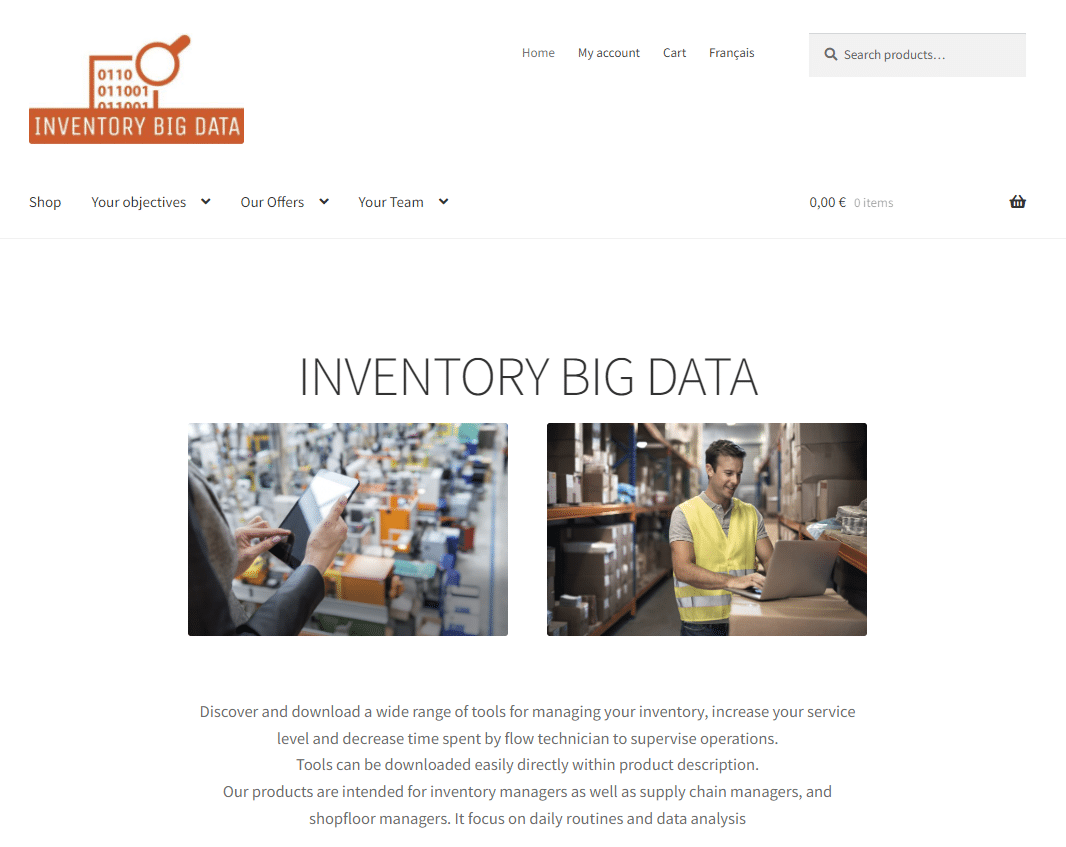Inventory Big Data
Inventory Big Data is a platform offering free digital tools to automate and optimize inventory workflows. These tools are designed for manufacturers, warehouse managers, and supply chain professionals who need agile, easy-to-implement solutions.
With a strong focus on data analytics, the platform allows users to track inventory, improve delivery performance, and refine storekeeping routines—all from a modern and intuitive interface.
Our mission: empower industrial teams with smart, data-driven methods to reduce delays, cut waste, and improve customer satisfaction.
What We Offer
Our services are crafted for companies looking to improve logistics, production routines, and global supply chain performance. With Inventory Big Data, you gain insights and actionable strategies without complex systems or expensive integrations.
- Delivery performance audits and improvement plans
- Strategic insights to boost manufacturing KPIs
- Review and restructuring of data exploitation
- Optimization of daily and weekly management routines
- Delay mitigation in manufacturing and shipping workflows
- Inventory diagnostic using our ABClog™ method
Who Benefits?
Storekeepers, flow managers, and logistics leaders all benefit from real-time data visualization and practical KPIs. Many roles lack clear definitions and effective tools—we provide both, ensuring job clarity and efficiency.
From monitoring delay depths to improving service levels, our platform transforms complex operations into intuitive workflows tailored for industrial teams.
Why Inventory Data Matters
Inventory Big Data refers to the collection and analysis of massive quantities of stock and operations data: product types, quantities, stock locations, demand trends, and supply flow. By understanding this data, manufacturers and managers can take smarter decisions, reduce waste, and boost profitability.
Well-structured data lets teams forecast more accurately, balance stock, improve customer satisfaction, and achieve just-in-time logistics goals.
What Is Inventory Level Optimization?
It’s the practice of maintaining stock at the right level—enough to meet customer demand, but not so much that it increases cost and waste. It involves demand forecasting, efficient replenishment, and tracking movement patterns to avoid shortages or overstock.
How to Improve Inventory Execution
Inventory execution means carrying out accurate physical counts and comparing them with digital records. It’s the foundation of reliable stock management and crucial to detect shrinkage, misplacement, or errors.
To improve your inventory checks, here are some tips:
- 📊 Use inventory software or barcode scanning systems
- 📆 Set a recurring inventory schedule (monthly or quarterly)
- 🎯 Train staff on procedures and accuracy standards
- 🔍 Identify and fix inefficient steps in your current process
- ♻️ Use cycle counts to verify priority zones more frequently

